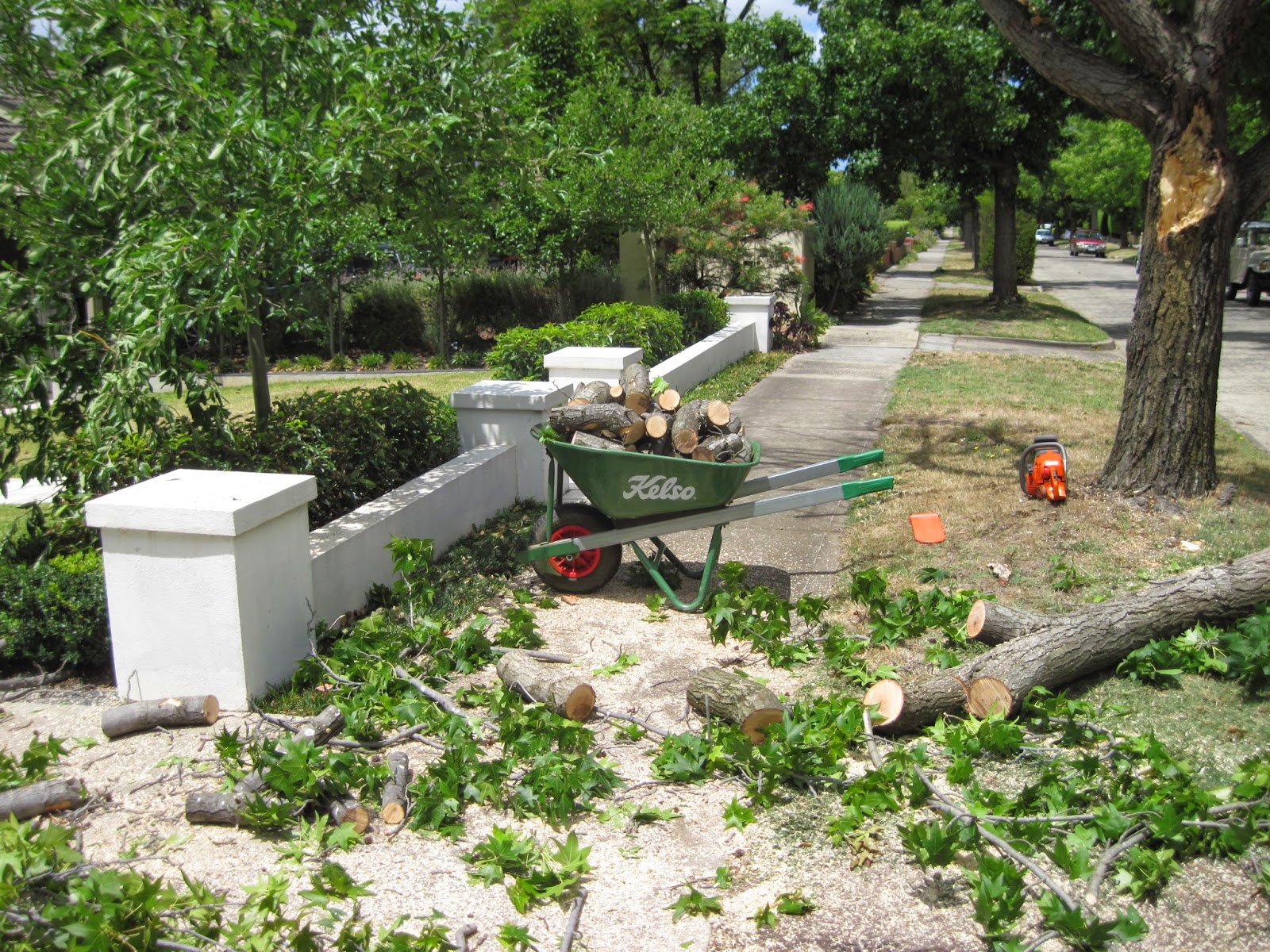We have a range of street trees planted in our neighbourhood. One common species is Liquid ambar (Liquidambar styraciflua). A large branch fell off one the other day not far from us.
Getting firewood usually involves putting wood in the back of the car wrapped in a tarpaulin or a trailer. With the prospect of low timber miles and using the wheelbarrow to bring the wood back I took the Huskie up the road.
First I trimmed small branches using the saw and breaking some off by hand. Taking off these small branches makes cutting up the larger limbs safer and easier. And the wood is easier to stack.
Then I cut up the branch into firewood sized pieces.
And loaded up the wheelbarrow.
To hold up the larger sections of the log which were lying on the ground I used a log jack. Holding up the log end helps to avoid getting the chainsaw bar pinched and cutting into dirt. If the chain hits dirt while in use this blunts the cutters. Sharp chains are essential for safe and efficient use of a chainsaw. But not a job I want to do more often than necessary.
PragSust Enterprises owns a chainsaw mill. I considered slabbing the largest piece of the branch but the wood had some rot.
Job done with wood cut into firewood lengths and the smaller material off the footpath and driveway. (If I'd had more time I could have chipped the smaller branches but I had some other work planned for that weekend including a trip to Emerald in the Dandenong Ranges to check out a largish Himalayan cedar Cedrus deodara for chainsaw milling.) The homeowner can put the smaller material in the green waste bin for collection. Our suburb has separate roadside collection for general waste, recycling and green waste.
I then stacked the wood under our north facing eaves. This spot is sheltered and captures a lot of sun. Wood dries quickly.
Firewood cognoscenti may notice an interesting mix of species. There's some blackwood (Acacia melanoxylon) from windthrow on a farm, some mountain ash (Eucalyptus regnans) from a large tree that blew over on a property in the Dandenongs, some pine (Pinus radiata) from farm tree fenceline trimmings and the just added liquid ambar.
The liquid ambar might not have long to live. Half of it looks dead.
And where the branch fell off doesn't look healthy. Perhaps pruning the tree into a wineglass shape to avoid contact between the electricity lines and the branches isn't so good for the tree. Burying the electricity lines might be a better solution.
Various parrot family members love the seeds from these trees. Corellas eat the seeds in the tree.
And on the ground.
As well as seeds from other trees.
As long as the wood is burnt when seasoned in a properly operated, high efficiency combustion system, wood energy is a low carbon, cost effective energy source. We get all of the wood we use for heating from what would otherwise be waste sources. And in this case we had very low firewood miles!













Lovely story, and nice photos.
ReplyDelete